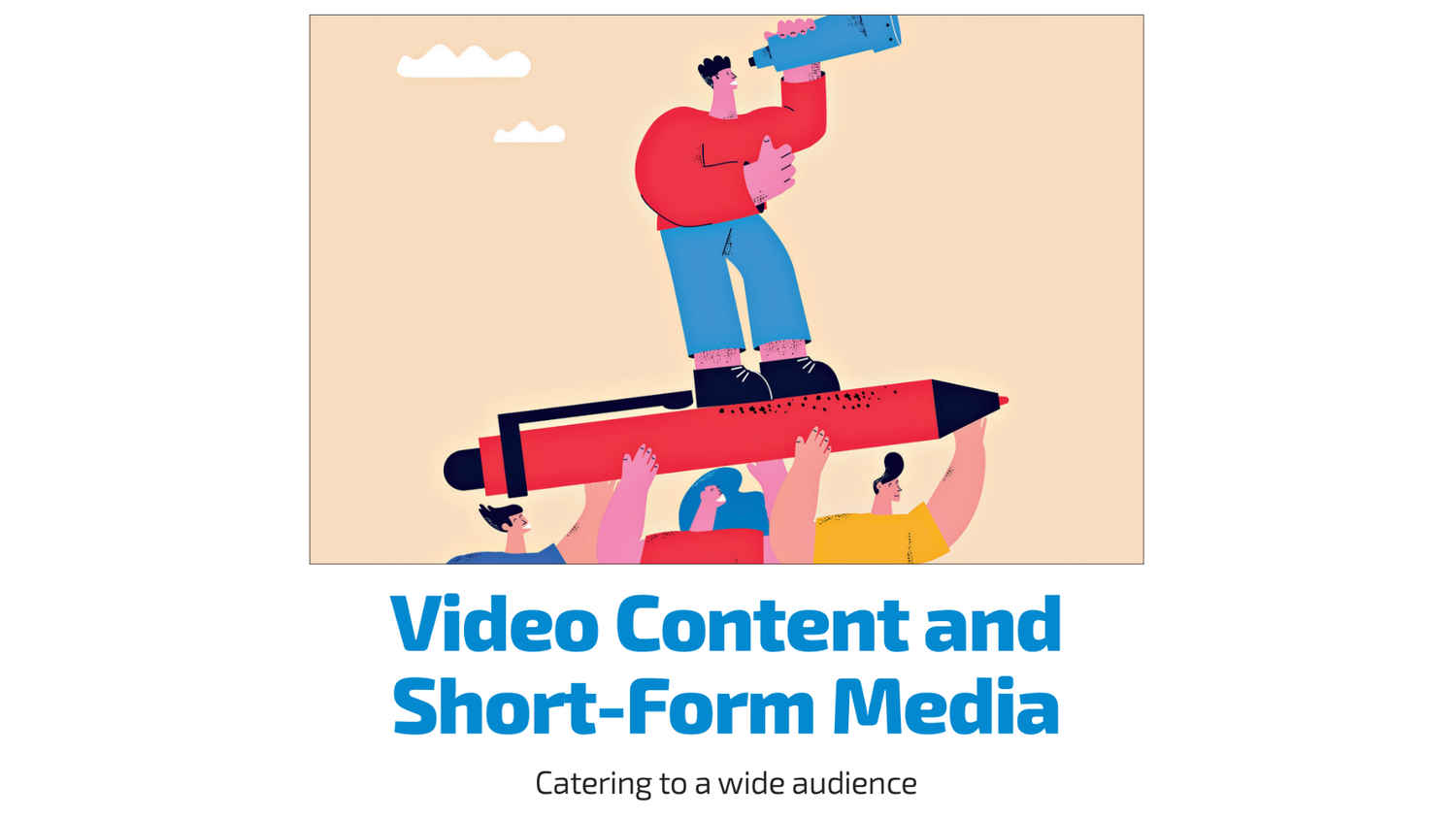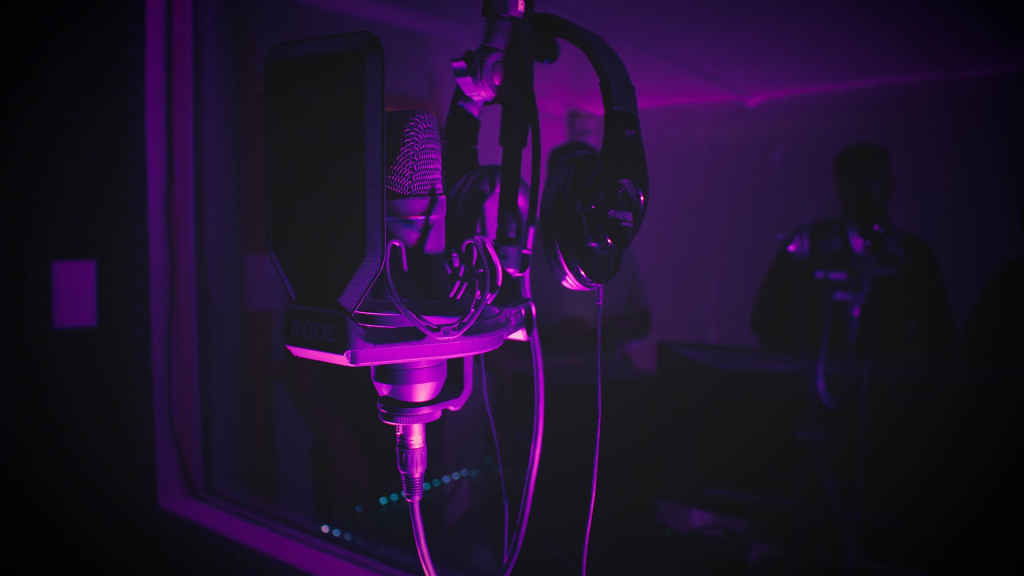Content Creation Guide: Master Instagram Reels and YouTube Shorts

Platforms like Instagram Reels, and YouTube Shorts have revolutionized content consumption, catering to shorter attention spans and mobile-first users. Here, we dive deep into audience demographics, particularly the preferences of Gen Z and Millennials, and highlight successful creators and brands. It also covers the key platforms, creative strategies for producing engaging short-form videos, and the growing role of live streaming. Finally, we will also take a look at monetization opportunities, offering insights into building a sustainable career in this dynamic space.
The Rise of Short-Form Video
The digital landscape has undergone a dramatic transformation, with short-form video emerging as a dominant force that has revolutionised the way people consume content. Platforms like TikTok, Instagram Reels, and YouTube Shorts have captured the attention of billions globally, redefining the dynamics of content creation, consumption, and sharing. These platforms have created a cultural shift, moving from traditional long-form media to content that is more easily digestible in shorter bursts, perfectly suited to the fast-paced lifestyle of modern viewers.
The Short-Form Video Phenomenon
The rapid ascent of short-form video can be attributed to several key factors, each playing a crucial role in shaping this phenomenon:
Decreasing Attention Spans: In an era dominated by a deluge of information, attention spans have significantly diminished. People are bombarded with content from every direction—social media, news outlets, advertisements, and more. This saturation of information has led viewers to prefer content that can be consumed quickly and effortlessly. Short-form videos, often ranging from 15 seconds to a few minutes, perfectly cater to this need for brevity, providing immediate engagement without the time commitment required by longer formats.

Mobile-First Culture: The proliferation of smartphones has made video consumption a ubiquitous part of daily life. With the advent of high-speed mobile internet and advancements in smartphone technology, users increasingly turn to their devices for both entertainment and information. The convenience of consuming content on the go has bolstered the popularity of short-form videos, which are ideally suited for mobile viewing. Whether during a commute, a break, or just a moment of boredom, short-form videos provide a quick entertainment fix.
Algorithm-Driven Discovery: One of the most compelling reasons behind the success of platforms like TikTok is their sophisticated algorithms that recommend content tailored to individual preferences. These algorithms analyze user behavior to curate a personalized feed, making it easier for creators to reach a wider audience. This kind of content discovery is less about what users actively seek out and more about what is presented to them, creating opportunities for viral sensations to emerge seemingly out of nowhere.
Viral Potential: The shareable nature of short-form videos has led to countless viral sensations, illustrating the power of these platforms to amplify content in ways that were previously unimaginable. A single, well-timed video can reach millions of viewers across the globe within hours, thanks to the ease with which users can share content. This viral potential has not only made short-form videos a powerful tool for individual creators but also for brands looking to increase their visibility and engagement with consumers.
Audience Demographics and Preferences
Understanding the target audience is crucial for creating effective short-form content that resonates and engages. Different demographics exhibit distinct preferences when it comes to content consumption, and short-form videos have become particularly popular among certain groups:
Dominance of Gen Z and Millennials: These demographics have shown a particular affinity for short-form video, driven by their preference for content that is authentic, relatable, and visually stimulating. Gen Z, in particular, values transparency and realness in the content they consume, often gravitating toward creators who are perceived as genuine and down-to-earth. Millennials, while slightly older, also enjoy the quick, easily digestible nature of short-form videos, especially when it comes to content that offers entertainment or useful insights.

Entertainment and Information: Viewers are not only looking for entertainment but also for content that provides value in a concise format. Educational content, life hacks, how-tos, and quick tips have found a strong foothold in short-form video platforms, blending entertainment with learning. The challenge for creators is to strike a balance between being informative and engaging, ensuring that the content is both enjoyable and useful to the audience.
Swipe Culture: The rise of platforms like Instagram Reels and TikTok has conditioned users to expect rapid-fire content consumption. The swipe-up functionality allows users to move seamlessly from one piece of content to the next, creating a dynamic viewing experience that is fast-paced and immersive. This has further fueled the demand for content that is short, engaging, and immediately gratifying, as viewers can easily swipe away from anything that doesn’t immediately capture their interest.
Impatience: In a world where instant gratification is the norm, viewers have become increasingly impatient with content that takes too long to get to the point. The demand for immediate gratification has shaped the fast-paced nature of short-form video, where every second counts. Creators need to grab the viewer’s attention within the first few moments, or risk losing them to the next video in the endless scroll.
Case Studies: Industry Leaders
Several individuals and brands have harnessed the power of short-form video to achieve remarkable success, becoming leaders in this rapidly evolving space. Their strategies offer valuable insights into what it takes to thrive in the world of short-form video.
Charli D’Amelio: Charli D’Amelio, one of the most prominent figures on TikTok, rose to fame with her dance-focused content. However, her success extends beyond just dancing. She has diversified her content to include challenges, collaborations with other creators, and behind-the-scenes glimpses into her life. This approach has allowed her to foster a strong connection with her audience, making her more than just a dancer but a relatable and multifaceted personality. Her ability to engage with her followers through a variety of content types has solidified her position as a leading influencer on the platform.
Gary Vaynerchuk: Gary Vaynerchuk, commonly known as GaryVee, has built a substantial following by condensing complex business concepts into easily digestible, actionable advice. His energetic and no-nonsense style resonates with viewers who are looking for practical tips on entrepreneurship and personal development. GaryVee’s success on platforms like TikTok and Instagram Reels demonstrates how short-form video can be used to convey meaningful content in a way that is both engaging and inspiring.
Beauty and Fashion Influencers: The beauty and fashion industries have seen a surge in the use of short-form video, with influencers leveraging these platforms to showcase products, tutorials, and the latest trends. Creators in this space have successfully built loyal communities by offering content that is visually appealing, informative, and highly shareable. By using short-form videos to highlight their expertise and connect with their audience, beauty and fashion influencers have become key players in the marketing strategies of major brands.

Brand Examples: Companies like Chipotle and Dunkin’ Donuts have effectively used short-form video to create memorable campaigns that increase brand awareness and engagement. Chipotle, for instance, has capitalized on viral trends by participating in challenges and creating content that resonates with its target audience. Dunkin’ Donuts has similarly used TikTok to launch campaigns featuring popular influencers, which has helped the brand stay relevant and connected with younger consumers. These examples highlight the potential for brands to use short-form video not just for promotion but for building a lasting connection with their audience.
Platforms for Short-Form Video
The short-form video landscape is dominated by a few key platforms, each offering unique features and catering to different audiences. Understanding the strengths and nuances of each platform is essential for creators and brands looking to maximise their reach and impact.
Instagram Reels
Core Features: Instagram Reels integrates seamlessly with the broader Instagram platform, offering editing tools similar to TikTok’s but with a focus on visual storytelling. The integration with Instagram allows creators to leverage their existing follower base while exploring new content formats.
Audience: Instagram Reels attracts a demographic that overlaps with Instagram’s core audience, which includes a broader age range compared to TikTok. This makes Reels an appealing option for creators and brands looking to reach both younger and older audiences within the same platform.
Content Focus: Popular content on Instagram Reels includes behind-the-scenes footage, fashion and beauty content, fitness routines, and influencer collaborations. The platform’s emphasis on aesthetics and visual appeal makes it a natural fit for creators in the fashion, beauty, and lifestyle spaces.

YouTube Shorts
Core Features: YouTube Shorts leverages YouTube’s existing infrastructure, offering a vertical video format that integrates with the platform’s long-form content. This allows creators to use Shorts as a way to complement their longer videos and engage with viewers in a new format.
Audience: YouTube Shorts caters to a diverse audience that overlaps with YouTube’s core user base, which includes a wide range of age groups and interests. The platform is particularly appealing to creators who already have a presence on YouTube and are looking to diversify their content offerings.
Content Focus: The content on YouTube Shorts is varied, with popular categories including comedy, gaming, tutorials, and music. The platform’s versatility allows creators to experiment with different content types while reaching a broad audience.
Other Notable Platforms
While Instagram Reels, and YouTube Shorts are the most prominent players in the short-form video space, other platforms have also made their mark:
Snapchat Spotlight: Snapchat has introduced Spotlight, a feature that allows users to share short-form videos with a wider audience beyond their immediate friends. This platform is particularly popular among younger users who are already familiar with Snapchat’s interface and features.
Triller: Triller is another platform that has gained popularity, particularly among users looking for an alternative to TikTok. It offers similar features, including music-driven videos and editing tools, but with a focus on artist collaborations and original content.
KuaiShou (China): In China, KuaiShou is a leading platform for short-form video, catering to a massive audience with a focus on content that ranges from entertainment to education. The platform’s success highlights the global appeal of short-form video and the potential for similar platforms to emerge in other regions.
Creating Engaging Short-Form Videos
Crafting compelling short-form content requires a combination of creativity, technical skills, and a deep understanding of audience preferences. The process of creating engaging videos involves several stages, each critical to the final product’s success.
Pre-Production
Idea Generation: The first step in creating engaging short-form videos is brainstorming ideas that align with platform trends and audience interests. Successful creators often draw inspiration from current events, popular culture, and trending topics. This phase involves considering what type of content will resonate with the audience while also standing out in a crowded marketplace.
Scripting and Storyboarding: Even for short-form content, having a clear narrative structure is essential. Scripting and storyboarding help creators plan the flow of the video, ensuring that each second is used effectively. This planning phase is crucial for maintaining the viewer’s attention from start to finish.
Visual Planning: A shot list is an essential tool for visual planning, allowing creators to map out the specific shots needed to tell their story. This ensures that the final video is cohesive and visually appealing, with each shot serving a purpose.
Audio Selection: Music and sound effects play a significant role in setting the mood and enhancing the message of a video. Selecting the right audio can make the difference between a video that captivates and one that falls flat. Whether it’s a popular song, a catchy sound bite, or custom sound effects, audio should complement the visuals and add to the overall impact.
Production
Lighting: Proper lighting is crucial for creating clear and visually appealing footage. Whether shooting indoors or outdoors, understanding how to use light to enhance the subject can significantly improve the quality of the video. Simple techniques, such as using natural light or setting up basic lighting equipment, can make a substantial difference.

Camera Work: The way a video is shot can greatly influence its engagement. Experimenting with different angles, movements, and close-ups can help maintain viewer interest. Dynamic camera work, such as panning or tilting, can add energy to a scene, while close-ups can create an intimate connection with the viewer.
Performance: The on-screen performance is key to connecting with the audience. Whether the video features a person, an animation, or a product, the delivery should be authentic and engaging. For creators appearing on camera, this means being confident, expressive, and relatable. For other types of content, it might involve ensuring that the visuals are clear and compelling.
Equipment: The type of equipment used can vary depending on the desired outcome. While many successful short-form videos are shot on smartphones, using additional equipment, such as stabilizers or external microphones, can enhance the production quality. For creators looking to elevate their content, investing in a good camera and sound equipment can provide more creative control and higher-quality results.
Post-Production
Editing: Editing is where the magic happens, allowing creators to cut and trim footage to maintain a fast pace and engaging rhythm. This phase involves piecing together the best shots, adding transitions, and ensuring that the video flows smoothly from start to finish. The goal is to create a seamless viewing experience that keeps the audience engaged.
Visual Effects: Adding special effects or transitions can enhance the visual appeal of a video, making it more engaging and memorable. Whether it’s simple text overlays, animated graphics, or more complex effects, these elements can help emphasize key points and add a layer of professionalism to the content.
Text Overlays: Incorporating captions or text overlays provides additional context or information, making the content accessible to a wider audience. Text can highlight important points, provide instructions, or add humor. It also makes videos more accessible to viewers who may be watching without sound.
Color Correction: Adjusting the color balance and contrast can dramatically change the look and feel of a video. Color correction ensures that the footage is consistent and visually appealing, while also helping to convey the desired mood or atmosphere. Whether aiming for a vibrant, high-energy look or a more subdued, cinematic style, color correction is a crucial step in the post-production process.
Optimization

Platform-Specific Guidelines: Each platform has its technical requirements and best practices, which should be followed to ensure that videos are displayed correctly and reach the intended audience. This includes considerations like video dimensions, file size, and duration. Adhering to these guidelines not only improves the user experience but also enhances the chances of the content being promoted by the platform’s algorithms.
Hashtags and Captions: Utilizing relevant hashtags and descriptive captions is essential for improving discoverability. Hashtags allow videos to be grouped with similar content, making it easier for users to find them. Captions provide context and can entice viewers to watch, especially when they summarize the video or ask a question that encourages interaction.
Analytics: Tracking performance metrics, such as views, likes, shares, and comments, provides valuable insights into what works and what doesn’t. Analyzing these metrics helps creators understand their audience better and refine their content strategy. Over time, this data-driven approach can lead to more successful videos and a more engaged audience.

A/B Testing: Experimenting with different formats, styles, and content types is a powerful way to optimize future videos. A/B testing involves creating multiple versions of a video and analyzing which performs better. This approach allows creators to test everything from thumbnail designs to video length, helping to refine their approach and achieve better results.
Live Streaming and Real-Time Engagement
Live streaming offers a unique opportunity to connect with audiences in real-time, fostering a sense of community and interaction that is difficult to achieve with pre-recorded content. As live streaming continues to grow in popularity, understanding the platforms, best practices, and monetization opportunities is crucial for creators looking to leverage this format.
Live Streaming Platforms
Several platforms dominate the live streaming space, each with its strengths and target audiences:
Twitch: Originally focused on gaming, Twitch has expanded into other categories, including music, art, and talk shows. Its strong community aspect and interactive features make it a go-to platform for creators looking to engage deeply with their audience.
YouTube Live: Leveraging YouTube’s massive user base, YouTube Live is suitable for a wide range of content, from gaming and live events to educational streams and Q&A sessions. The integration with YouTube’s long-form content allows creators to build a comprehensive content strategy that includes both live and recorded videos.
Instagram Live: Instagram Live integrates live streaming into the broader Instagram platform, allowing creators to reach their followers in real-time. It’s particularly popular for behind-the-scenes content, influencer takeovers, and interactive sessions where viewers can ask questions or participate in polls.
Facebook Live: With access to Facebook’s broad user base, Facebook Live offers a versatile platform for creators and brands to connect with a diverse audience. It’s often used for events, product launches, and real-time discussions, making it a valuable tool for marketers and content creators alike.
Best Practices for Live Streaming
To make the most of live streaming, creators should follow several best practices that enhance the quality of their streams and foster deeper engagement with their audience:
Planning and Promotion: Successful live streams often begin with careful planning and promotion. Creating a clear schedule and announcing it ahead of time builds anticipation and ensures that viewers know when to tune in. Promoting the live stream across social media and other channels can also help attract a larger audience.
Technical Setup: High-quality audio and video are crucial for an optimal viewing experience. Creators should ensure that they have a stable internet connection, good lighting, and clear sound. Testing the setup before going live can help identify and fix any potential issues, ensuring a smooth stream.
Engaging with the Audience: One of the key advantages of live streaming is the ability to interact with viewers in real-time. Responding to comments, answering questions, and acknowledging viewers by name can create a more personalized and engaging experience. This interaction helps build a sense of community and encourages viewers to stay engaged throughout the stream.
Building Community: Fostering a sense of belonging is essential for building a loyal following. This can be achieved by regularly streaming, creating a welcoming environment, and encouraging viewers to participate in discussions or activities during the stream. Over time, these efforts can lead to a strong, dedicated community that supports the creator’s content.
Leveraging Analytics: After the live stream, analyzing viewer behavior, such as peak viewership times, engagement levels, and audience demographics, can provide valuable insights for future streams. This data can help creators refine their content and delivery to better meet the needs and preferences of their audience.
Monetization Opportunities
Live streaming also offers several monetization opportunities, allowing creators to turn their passion into a profitable venture:
Donations and Subscriptions: Many platforms, including Twitch and YouTube, allow viewers to support creators financially through donations or subscriptions. This direct support from the audience can be a significant revenue stream, especially for creators who consistently provide value through their live streams.
Sponsorships and Brand Partnerships: Collaborating with brands for product placements or sponsored content during live streams is another way to generate income. Brands are often interested in reaching the engaged and targeted audience that live streams attract, making this a mutually beneficial arrangement.
Merchandise Sales: Offering exclusive merchandise to live stream viewers is a popular way to monetize live streaming. By creating limited-edition products or offering special deals during the stream, creators can incentivize purchases and reward their most dedicated fans.

Affiliate Marketing: Promoting products or services during a live stream and earning commissions on sales through affiliate marketing links is another effective monetization strategy. This approach works particularly well for creators who have built trust with their audience and can recommend products they genuinely believe in.
Conclusion
The short-form video landscape is constantly evolving, presenting exciting opportunities for creators to connect with audiences and build successful careers. By understanding the trends, platforms, and best practices outlined in this chapter, you can develop engaging content that resonates with your target audience and drives growth. Whether through short-form videos, live streaming, or a combination of both, the key to success lies in creativity, authenticity, and a deep understanding of your audience’s needs and preferences. As you continue to refine your content strategy, stay adaptable and open to new trends and platforms, ensuring that you remain at the forefront of this dynamic and fast-paced digital landscape.
You can access more articles of the series here:
1. What is content creation?
2. Master Instagram Reels and YouTube Shorts (You are here)
3. Understanding social media audience
4. Exploring new ways of social media interaction
5. All the tools you need as a content creator
6. Do’s and Don’ts for Content Creators
Team Digit
Team Digit is made up of some of the most experienced and geekiest technology editors in India! View Full Profile





